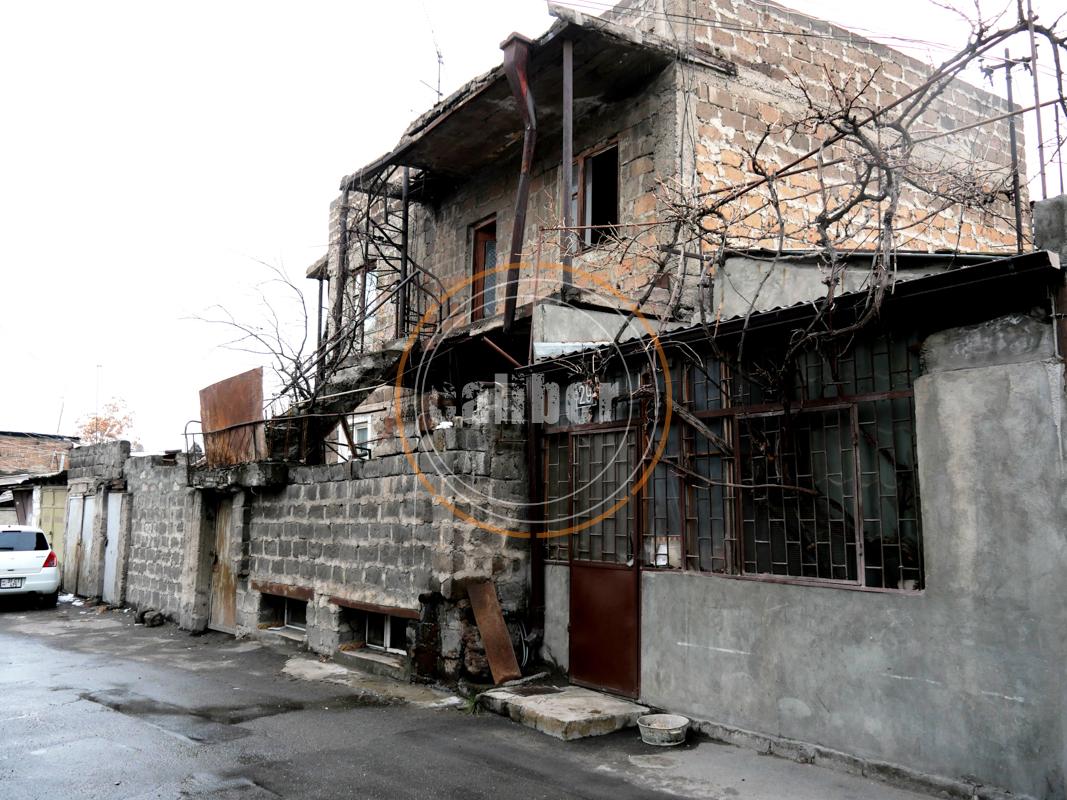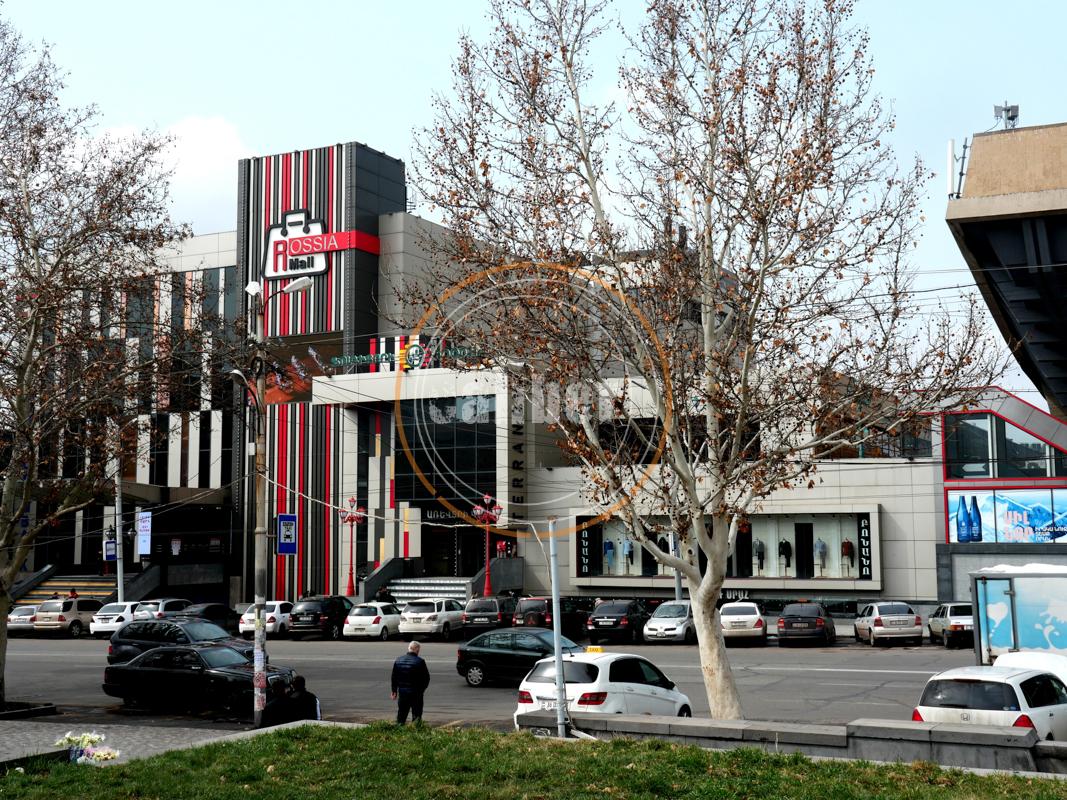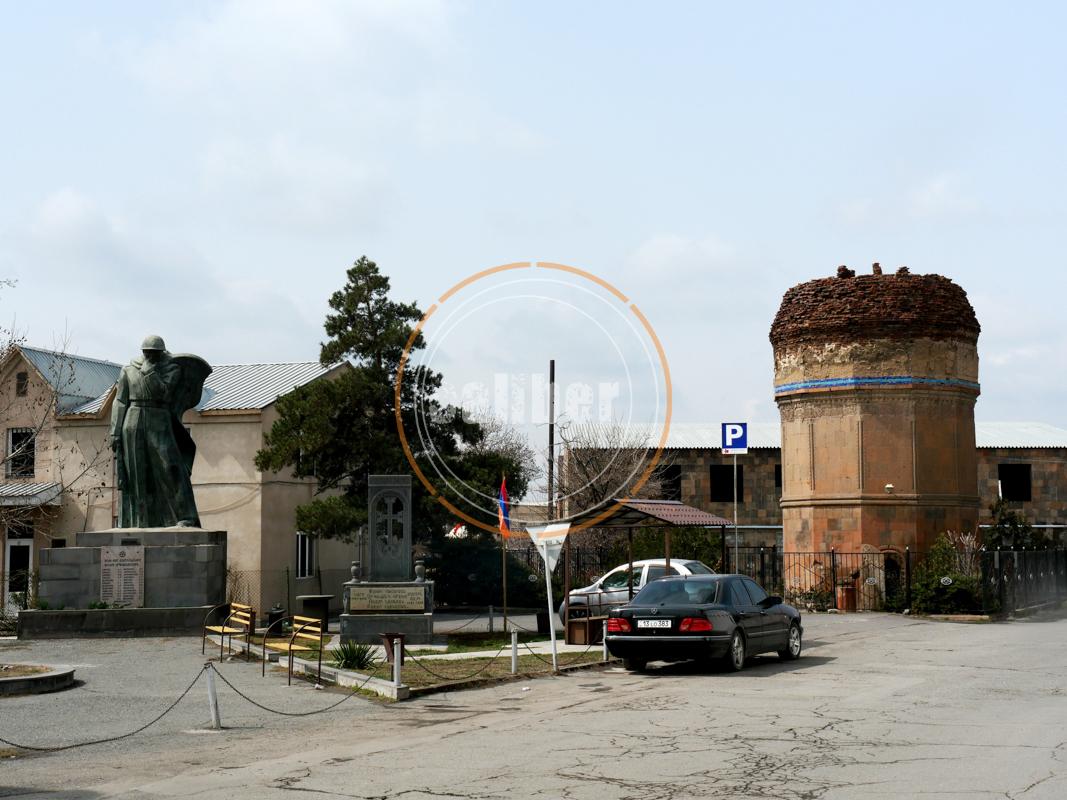Caliber.az mission landed in Armenia: investigation into the footsteps of vandals Exclusive photo facts
Checkpoint "Bagratashen" behind. Dust. I notice right away that the quality of the road surface in this part of Armenia has improved significantly compared to my last visit here. It can be said that it is no worse than on the Georgian side, for example, in the Sadakhlo. My path, according to the editorial assignment, first lies in Iravan, but to get to the Azerbaijani city, which became the Armenian capital in 1918, for the journalist of Caliber.Az, and even semi-legally (let's not go into details, because, I hope, this is not my last visit to the “land of stones”) is a rather complicated and risky thing. Fortunately, my Armenian is enough to communicate with the locals without arousing any suspicion in them. And the experience of past visits to Armenia has not gone away.
Karen, my fellow traveler from the Bagratashen checkpoint, dropped me off on an old Zhigulenka near the village of Haghpat, since our paths diverged further - he needed to go to Tsaghkashat, and I went further to the ancient Azerbaijani city of Irevan. So, what is that dusting away on the road? It's a little hard to see in the dark. But "eureka", it turned out to be a taxi, as evidenced by the "light box" on the roof of the car. A wave of the hand and the brakes screeched nearby. “Where do you want to go?” the elderly driver asked in Armenian (naturally). “To Yerevan,” I replied. “No, I won’t take you to Yerevan,” the driver waved his hands. - It is too far. I’m already on my way home, my family is waiting, my son has a birthday, the guests have arrived.” However, the solid amount of cash that appeared in my hands turned out to be stronger than the desire to join the family celebration. “Not a local?” The driver looked suspiciously. “From Javakh, but for the last 15 years I have been living in Russia. Now hard times have come there, so I decided to take a closer look at Yerevan,” I lied without batting an eyelid. Apparently, convincingly, since we rolled to Iravan.
Readers are probably already wondering why the Caliber.Az journalist, risking his life, went to Armenia. Let me explain. Our goal is extremely clear - to show how the cultural and historical heritage of the autochthonous Azerbaijani people was destroyed in Armenia. Show it clearly in order to smash the false allegations of Armenian propaganda that there is supposedly no place in Armenia for vandalism and the appropriation of someone else's history and culture. Well, as they say, let's go and see.
But first, let's digress a little from the topic. The cultural and historical genocide committed by the Armenian vandals spread not only to the Karabakh region of Azerbaijan, but also to the territory of Armenia, where there were more than a thousand Azerbaijani settlements, hundreds of historical and architectural monuments, caravanserais, palaces, mosques, mausoleums, tombs, cemeteries, tombstones, etc. It all was there in the XX century. As a result of ethnic cleansing committed by Armenians against Azerbaijanis and acts of vandalism carried out against historical monuments, a mono-ethnic Armenian state was created, all historical and architectural monuments that testify to the existence of Azerbaijanis were wiped off the face of the earth, and even cemeteries were destroyed. If at the beginning of the XX century 310 mosques were registered on the territory of the Irevan province, now only one mosque remains on the territory of modern Armenia - the Goy Mosque (Blue Mosque), which is presented to foreign guests as "Persian".
Regular readers of Caliber.Az may remember the material, which provided photographic evidence of the destroyed Azerbaijani heritage in Iravan. This time we will share exclusive footage of destroyed historical and cultural monuments in Iravan, which was obtained by a Caliber.Az correspondent.
So, I am in the city of Iravan, and, of course, I immediately go to the avenue, which used to be named after Lenin, and now - Mesrop Mashtots, to admire the Blue Mosque, which the Armenians call “Persian” for a clear reason. There are surprisingly few people around and this gives me a unique chance to enjoy the silence and contemplation of the majestic building of the era of Huseynali Khan Qajar.
Here it would be appropriate to note that the Armenians, with the help of specialists invited from Iran, reconstructed the mosque, put Persian inscriptions on its walls and thus converted the mosque into a “Persian” one. They tried to carry out the same thing in Shusha, which was then occupied by them, as evidenced by the "fresh" inscriptions on the Shusha Mosque.
I was brought out of my reverie by the screams of two local boys who rushed by on bicycles. I have many goals; I need to go further.
I am heading to the famous quarter of Tepebashi, which Armenians call Kond. And here is the place where the Tepebashi mosque was once located. Once upon a time, before the Armenian vandalism. Today, in a dilapidated state, it is used by an impoverished Armenian family as housing. According to some information, this mosque was built by a member of the Irevan city government, a representative of the khan's family, Abbasgulu khan of Iravan. His house was also located in this quarter. Armenians to this day call the house of Abbasgulu Khan, which is in a ruined state, “the House of Khan”. In the courtyard of the mosque and around it, the Armenians built slums.



By the way, I also walked along the famous Cascade among Armenians (they have nothing else to boast of). At first, you are surprised to hear people speaking Russian here - Armenians, due to their nationalism, did not speak Russian much in Soviet times. But then you realize that these are Russians who escaped from the "special operation". The Armenian police officers passing by do not even pay attention to me and pass by, talking enthusiastically about something.
Another evidence of Armenian vandalism is the destruction of the Demirbulag mosque, which was built in the 17th-18th centuries and was located in the same-named quarter of Iravan. In 1988, the mosque was burned down, and in 1990 it was razed to the ground. Today, as can be seen on the shots taken by us, the Rossiya shopping center is located here. Symbolically. The fact that Muslim Azerbaijanis once lived here is no longer reminiscent of anything.



And here is the mausoleum of Emir Saad, built by his son Pir-Hussein, not far from Iravan, in the village of Jafarabad. The historical monument of the 15th century has been partially preserved, but there is a rational explanation for this Armenian “kindness”. The fact is that the official circles of Armenia call this medieval mausoleum the “Turkmen mausoleum”. In the same way, they call the Blue Mosque in Iravan after the repair and restoration work - "Persian". And the Azerbaijanis here, they say, have never lived at all ...



A plaque installed near the monument provides information that the tomb is related to the state of Garagoyunlu. At the same time, the main stand indicates that the tomb is a Turkmen historical heritage.

Thus, the belonging of the monument to Azerbaijan is denied, which is a blatant falsification. Since the Turkic (Turkmen) Garagoyunlu tribes were one of the ancestors of modern Azerbaijanis, and the history of the Garagoyunlu state is an integral part of the history of the statehood of Azerbaijan.
No less sad fate befell the “Sardar” mosque, also known as “Abbas-Mirza” and “Shah Abbas”, located in the Irevan fortress, near the Sardar (Khan) palace. Despite the mention of different names in the sources, we are talking about the same architectural monument of the 16th century - the Sardar Mosque. Like other material and cultural Azerbaijani monuments of Iravan, this mosque was destroyed in parts by the Armenian authorities. And the playground and residential buildings, which are captured in the photographs we took, were built on the site of the Sardar Mosque, although a few years ago you could see the last remaining piece of the mosque wall there.

And now it looks like this:


Of course, our studies of Armenian vandalism were not limited to Irevan alone. I traveled half of Armenia and documented everything that interested me. So, for example, I visited the village of Archut, located in the Boyuk Garakil region. According to documents, at the end of the 19th century, there were 40 households in this village and 357 Azerbaijanis lived. In Soviet times, the population reached one and a half thousand people. There were three cemeteries in the village. However, in 1988, the indigenous Azerbaijani population was expelled from the village and today only Armenians live there. Naturally, they immediately destroyed the local mosque. However, inscriptions in the Azerbaijani language (Arabic script and Cyrillic alphabet) have been preserved on the gravestones.



The village of Akarak near Uchkilse (Uchmuedzin, which the Armenians call Echmiadzin in their own way). There used to be a mosque here too. It can be seen that its roof was completely destroyed, and only the ruins of the outer walls remained from the building. But the most disgusting thing is that the territory of the mosque is now used by the Armenians as a dump. However, why to be surprised? For those who have used the mosques in Karabakh as pig sheds, this is quite a normal practice.



The Loru Gala Mosque, which is located in the Lori Mahal and dates back to the 12th century, was even less “lucky” - the neighbours, without batting an eyelid, converted it into an Armenian church. On the shots we made, you can see that the interior of the mosque is largely identical to the interior of the Govhar Agha mosque in Shusha. Now Armenian national elements are visible on it, which were installed by Armenians in order to falsify its true origin. Moreover, as we can see, they even added Armenian crosses to the tombstones in the Muslim cemetery, which is located next to the mosque, so to speak, for greater credibility. Like, only Armenians prayed here, respectively, only they were buried here.



The caravanserai Selim, located above the village of Agkend of the Daralayaz mahal, was also subjected to falsification, as evidenced by the following shots. The people called the caravanserai after Shah Abbas. In one of the photos, you can see that at the entrance it is indicated that the building was built by the ruler of the Ilkhanids, Abu Said Bahadur Khan. Here, probably, it would be useful to emphasize that until 1918 only Azerbaijanis lived in the village of Agkend. According to statistics, only in 1923-1925, the first 172 Armenians were settled in the village. However, after the expulsion of all Azerbaijanis from the village in 1988, the history of the caravanserai was falsified, and it was presented to the world community as an Armenian historical monument.



The Azerbaijani media often talked about the destruction and falsification of the Azerbaijani historical and cultural heritage by Armenians on the territory of modern Armenia. Yes, some historians provided separate facts of Armenian vandalism. But Caliber.Az took a bold step by sending its correspondent to Armenia to collect factual material. Which in the future will be used not only by the scholars and the public of Azerbaijan but also in the international judicial and legal system to bring the Armenian barbarians to justice. And at last historical justice will surely prevail.
More photos in our gallery:








